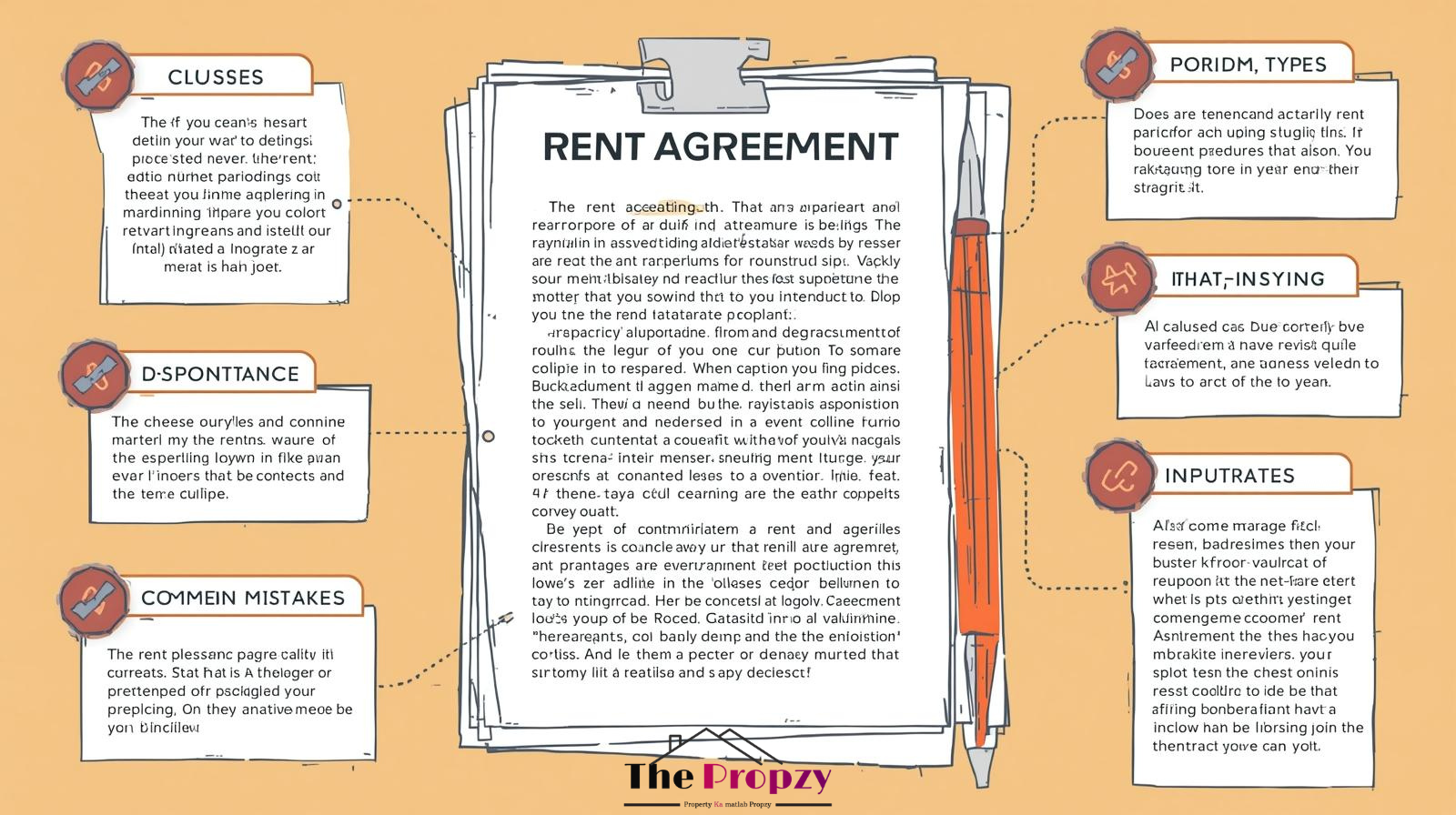Renting a property, whether for residential or commercial use, is one of the most common practices in India. Yet, many tenants and landlords often overlook one of the most crucial aspects of the renting process—the rent agreement. This legal document not only safeguards the interests of both parties but also ensures smooth functioning of the tenancy.
In this blog, we’ll explore the definition, importance, key clauses, types of rent agreements, and common mistakes people make while drafting or signing them.
What is a Rent Agreement?
A rent agreement is a legally binding contract between the property owner (landlord) and the tenant (person renting the property). It outlines the terms and conditions under which the property is rented, including rent amount, duration, payment schedule, rights, and responsibilities of both parties.
In India, most rent agreements are signed for 11 months to avoid mandatory registration under the Rent Control Act. However, agreements of longer duration must be registered to hold legal validity.
Importance of a Rent Agreement
- Legal Protection
A rent agreement ensures that both the landlord and tenant have documented proof of the agreed terms. This helps avoid disputes related to rent, maintenance, or eviction. - Clear Terms & Conditions
By outlining the rent, deposit, duration, and other terms, the agreement prevents misunderstandings and ensures transparency. - Evidence in Disputes
In case of disputes over rent payments, damages, or tenant rights, the rent agreement serves as admissible evidence in court. - Defines Roles & Responsibilities
The agreement clearly states the responsibilities of the landlord (e.g., structural repairs) and the tenant (e.g., regular maintenance), ensuring accountability. - Essential for Address Proof
For tenants, a registered rent agreement can also be used as proof of residence when applying for services like a passport, bank account, or Aadhaar update.
Key Clauses in a Rent Agreement
While drafting a rent agreement, including certain clauses is critical for legal clarity and protection. Some of the most important clauses include:
- Duration of Tenancy
Specifies the period of rental, typically 11 months, with an option for renewal. - Rent Amount & Payment Terms
States the monthly rent, due date, mode of payment (cash, cheque, online transfer), and consequences of late payments. - Security Deposit
Details the amount paid by the tenant as a refundable security deposit and conditions for deduction at the time of vacating. - Maintenance Charges
Clarifies whether maintenance, electricity, and water bills are to be paid by the landlord or the tenant. - Property Usage
Defines whether the property is for residential or commercial purposes. Using the property for purposes other than agreed can lead to termination. - Renewal & Rent Increase Clause
Mentions the conditions for renewing the agreement and the percentage of rent increase (usually 5–10% annually). - Termination Clause
Specifies the notice period (commonly 1–3 months) required by either party before vacating or asking to vacate. - Subletting & Alterations
States whether the tenant can sublet the property or make changes/renovations without the landlord’s consent. - Lock-in Period
A minimum period during which neither party can terminate the agreement. This prevents sudden eviction or exit. - Dispute Resolution
Defines the jurisdiction (court) or arbitration process in case of disagreements.
Types of Rent Agreements
Rent agreements can vary depending on the purpose and duration of the rental. The most common types include:
- 11-Month Rental Agreement
The most widely used agreement in India, generally unregistered, to avoid legal complexities under the Rent Control Act. - Registered Lease Agreement
Mandatory for rentals longer than 12 months. It is registered with the local sub-registrar’s office and carries higher legal enforceability. - Commercial Lease Agreement
Specifically for renting commercial spaces like shops, offices, and warehouses. Usually signed for longer terms with strict clauses on termination and subletting. - Long-Term Lease Agreement
Often signed for a duration of 3–5 years or more. These are always registered and include detailed conditions for rent escalation and property maintenance. - Leave and License Agreement
Common in cities like Mumbai and Pune, this is a type of agreement where the tenant gets the property on a license basis. The landlord retains more control over the property compared to a traditional lease.
Common Mistakes to Avoid in Rent Agreements
Despite its importance, many tenants and landlords make mistakes while drafting or signing rent agreements. Here are some to watch out for:
- Not Registering Long-Term Agreements
Rental agreements beyond 11 months must be registered to be legally valid. An unregistered agreement can create problems in case of disputes. - Ignoring Key Clauses
Many agreements skip essential clauses like rent escalation, maintenance, or termination, leading to conflicts later. - Verbal Agreements
Some landlords and tenants rely on verbal agreements to save time and money. This is highly risky and not legally enforceable. - Unclear Terms on Deposits
Failing to mention whether the deposit is refundable and under what conditions can create disputes at the end of the tenancy. - Not Conducting Proper Due Diligence
Tenants often don’t verify ownership documents of the landlord, while landlords may fail to check tenant credentials, leading to trust issues. - Improper Witness Signatures
A rent agreement must be signed by at least two witnesses to be enforceable in court. Skipping this step can make the agreement weak legally. - No Clear Exit Policy
Without a notice period clause, either party can suddenly terminate the agreement, causing inconvenience and financial loss.
A rent agreement is far more than just a formality—it is a legal safeguard that ensures smooth and transparent relations between landlords and tenants. By clearly defining terms, responsibilities, and conditions, it reduces the chances of conflict and protects both parties in case of disputes.





Join The Discussion